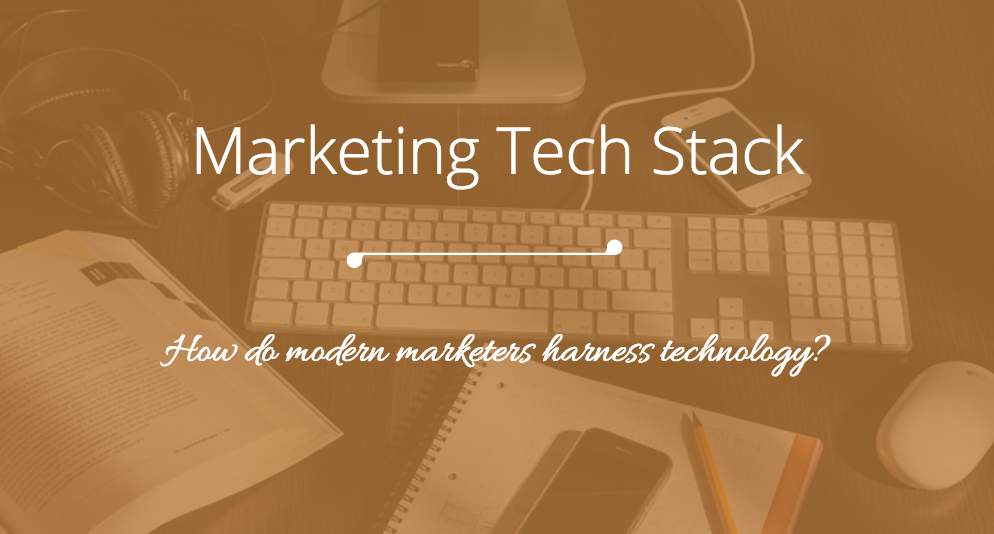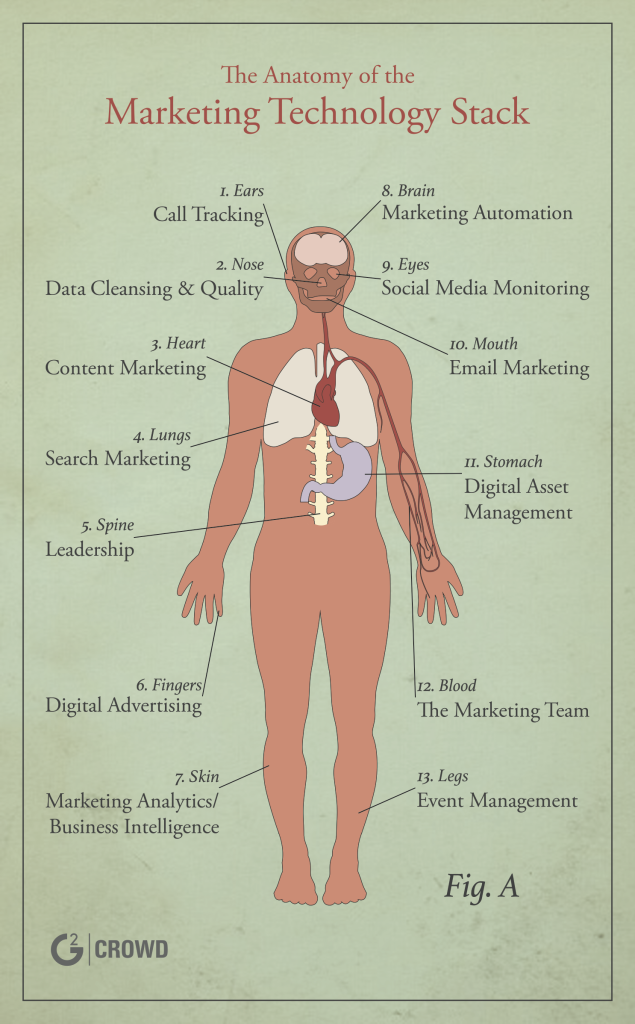It’s likely you’ve heard the term “marketing technology stack” referenced as a marketing trend lately – but the question that remains for many is: Um…what exactly is it?
In this post, we’ll not only answer that question, but we’ll look at why they’re so increasingly popular among marketers, as well as a must-have tool to add to your stack.
What Is a Marketing Technology Stack?
To explain it simply, a marketing technology stack is a group of technology-based tools (think SaaS platforms, traditional software, social media tools, etc.) that marketers use to efficiently and effectively conduct and monitor their marketing efforts.
For example, a marketer’s technology stack might include:
- An email marketing platform like Campaign Monitor or Mailchimp
- A social media scheduling tool like Buffer or Hootsuite
- A content management system (CMS) that hosts a company website and blog
- Analytics tools like Kissmetrics or Google Analytics for tracking different marketing efforts
And this is just the beginning. Depending on the size and needs of the business, marketing technology stacks can include many, many more tools.
The MarTech Conference we recently attended has some specific insights to share on the topic, but overall, the goal of the stack is to simplify processes and to make it easy to monitor and track many different marketing activities.
The Rise of the Marketing Technology Stack
Because of the value a marketing technology stack can provide, it’s no surprise that their use has increased so dramatically in recent years.
Data from MarketingLand shows that in 2011, there were about 150 companies geared toward marketing technology. In 2016, there are almost 4,000. Add to this the fact that Gartner predicts marketing technology budgets will exceed IT budgets by 2017, and it’s clear that this is no trend – technology stacks are here to stay.
Why? Because marketing technology stacks are helping marketers evolve with the changing needs of the customer. The tools within the stack are helping marketers get the right message in front of the right customers – at the right time.
Long gone are the days of “one size fits all” promotional messaging – the modern marketer needs a stack of tools to deliver personalized, contextual content (if it’s going to be effective).
Check out our post 47 Tools and Resources to Build a Ridiculously Powerful Content Tech Stack.
Anatomy of a Marketing Technology Stack
Different businesses have different promotional needs (obviously), but various tools within the technology stack help marketing departments more seamlessly achieve their objectives.
We covered some of the more common elements earlier in this post, so let’s break down the marketing technology stack piece by piece.
Image source: g2crowd.com
The lovely image here shows how different elements within the stack function independently and together to make a cohesive, effective marketing strategy.
For example: A social media monitoring tool is the eyes, allowing the marketing department to see what customers are saying in real time about the business or organization. Call tracking is the ears, allowing the team to hear and interpret customer calls.
If the team were to use only one or two of these tools, they’d be limited in their abilities. Looking at the stack from this perspective, it’s a little easier to understand why these individual tools are so essential – and how together, they provide a big-picture view.
How Teams Use the Stack
Unless you’re a magician or have figured out how to duplicate yourself, you need a team to manage the various tools in the stack. There are many components, so assigning different tasks to teams in marketing, customer service, and business development can enhance the effectiveness of the marketing stack.
For example: The department that measures and tracks the ROI and performance for different marketing activities would use the tools for analytics and metrics, while the team in charge of PPC efforts would use the SEM-related tools.
When these different teams come together and share information provided by their handy marketing stack, they can make better, more informed decisions about efforts moving forward – and can devote financial and time resources to the activities that are producing the best results.
Improve Your Marketing Stack with Interactive Content
One key element that marketers are sometimes missing from their marketing stacks is an interactive content tool. Interactive content (think assessments, calculators, trivia, polls, etc.) can be used as building blocks that are layered into content or used as standalone experience.
Interactive content is engaging because it initiates a dialogue with the audience and taps into their natural competitive spirit and desire to express their views. It offers real value and delivers quick, personalized results that matter to them. You could even say it’s like putting a sales development rep into a piece of content.
Want to learn more? Experience our interactive white paper: What Is Interactive Content and Why it Works.

